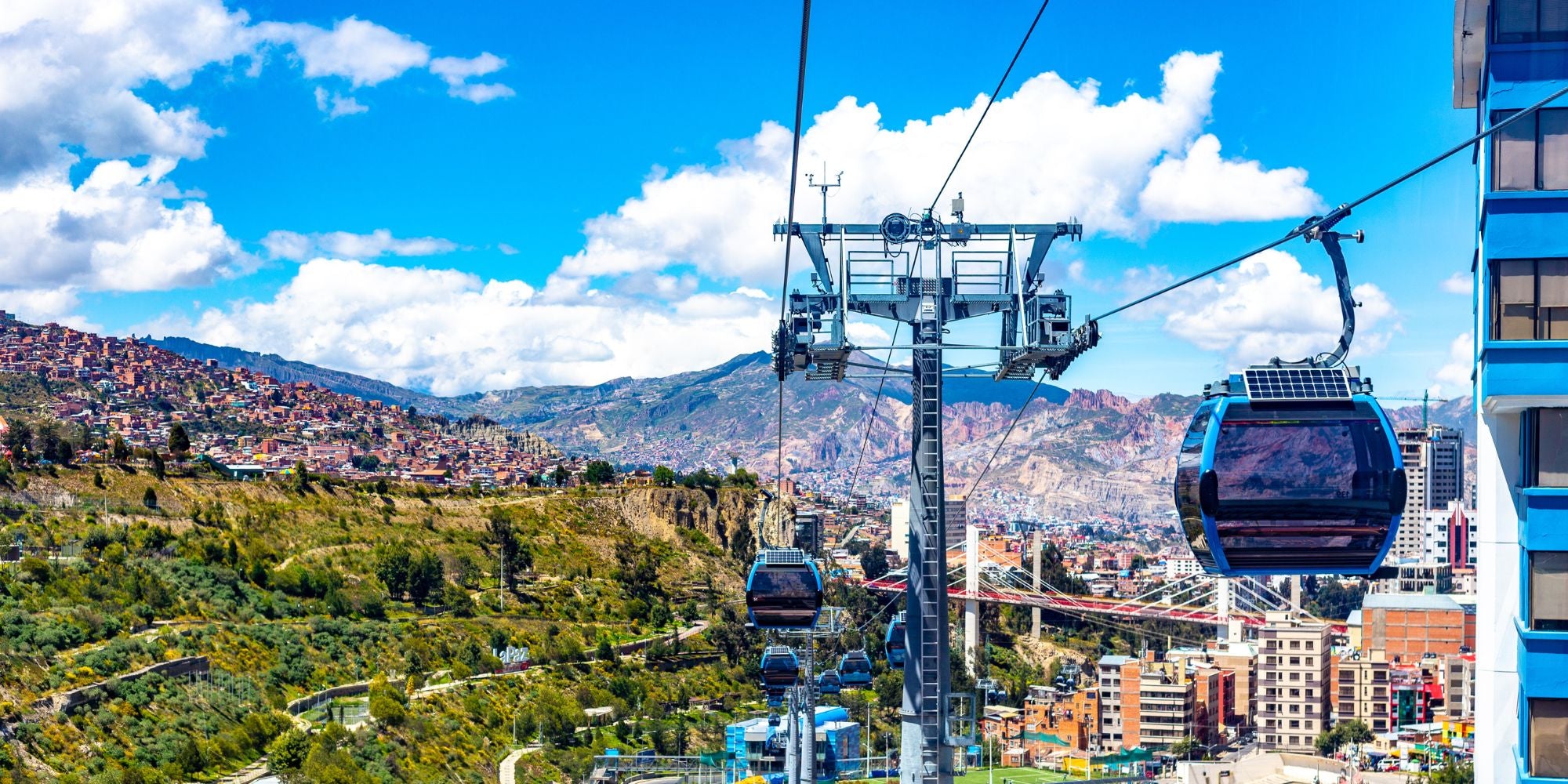
Altitude sickness is a very common problem for travelers visiting La Paz Bolivia. In this guide, you'll learn all the details you need to know about La Paz altitude sickness, the causes, symptoms, and how to avoid it.
If you're wondering what is the altitude of La Paz Bolivia is, it sits at 11,942 feet above sea level. La Paz is famous for being the highest capital city in the world.
La Paz is a beautiful city located in the Andes Mountains of Bolivia, just like other high altitudes cities such as Bogota. This makes it a popular destination for tourists who want to take in the amazing views of its surrounding mountains and valleys.
There's so many high-altitude activities to explore — from hiking Huayna Potosi and visiting Valley of the Moon to riding the La Paz Cable Car and driving Yungas Road.
Some of the surrounding destination altitudes:
If you're planning a trip to La Paz Bolivia, with these ranges of high altitudes it's important to understand what altitude sickness is and how to prevent it.
Yes, you can get altitude sickness in La Paz.
At 11,942 ft (3,640 m) in elevation, La Paz Bolivia is considered "Very High Altitude" by Mountain Medicine.⁸
According to Dr. Gallagher and Dr. Hackett, 40%-50% of people at over 10,000 feet will experience altitude sickness.⁹ This puts travelers to La Paz at extremely high risk, possibly higher than half of the visitors.
At abnormally high heights for a city, 11,942 ft (3,640 m) could cause you to have trouble breathing.
It's can be hard to breathe because of the lack of oxygen at these heights where oxygen levels are at only 12%-13%.¹⁰ This is a common symptom of altitude sickness, and could be more prevalent in La Paz due to very high altitudes.
Altitude sickness in La Paz, also known as acute mountain sickness or "soroche" in Spanish, is a collection of symptoms caused by low oxygen levels at high elevations.
The severity and length of symptoms vary based on how quickly you ascend to the higher elevation and how long you stay there. La Paz altitude sickness symptoms include headaches and nausea, and are worsened by natural bodily reactions such as increased respiration.
More severe forms of sickness are high-altitude cerebral edema (HACE) and high-altitude pulmonary edema (HAPE). Although very rare, those could be a risk if you plan to climb the extremely high mountains like Huayna Potosi or Chacaltaya.
La Paz Bolivia altitude sickness symptoms can include:
Symptoms of La Paz Bolivia altitude sickness typically will show up within 6-24 hours of arrival. If you’re not used to high altitudes and you don’t take precautions before traveling to La Paz, you can end up feeling sick for most or all of your trip.
Yes, La Paz is high altitude.
In fact, Mountain Medicine considers this "Very High Altitude" since it exceeds 11,500 feet above sea level.⁸ La Paz is considered one of the highest cities in the world and the highest capital.
While altitude sickness is very common in La Paz, the good news is that there are many ways to help avoid altitude sickness there.
And if you do find yourself suffering from some symptoms, there are several things you can do to feel better.
We have years of research on altitude sickness and will share with you our best tips below — including everything from hydration and acclimation to sleeping and glutathione.
The La Paz Bolivia altitude sickness is something that everyone needs to be aware of when they visit this beautiful city.
It's the highest capital in the world and because of this, many people can experience altitude sickness when they first arrive.
Being based in the high capital city of Denver, we have a lot of experience and research on high altitudes we'll share with you.
8 Tips To Avoid La Paz Bolivia Altitude Sickness:
To conclude, these highly research tips will help you avoid La Paz Bolivia altitude sickness — including acclimating gradually, hydrating properly, taking it easy, getting good sleep, limiting alcohol, consuming coca leaves, supplementing glutathione, and taking altitude sickness medicine.

Zaca is a uniquely formulated supplement used by athletes, climbers and travelers alike — helping you feel your best. This unique formulation combines a unique blend of herbal ingredients including glutathione to support you body. Rehydrate, replenish, and recover. Made as fast-acting chewable tablets in on-the-go packets that you can take anywhere. Try Zaca Chewables today and power your next altitude trip.
SOURCES:
1. Huayna Potos Altitude
https://en.wikipedia.org/wiki/Huayna_Potos%C3%AD
2. Austria Peak Altitude
https://www.summitpost.org/austria-peak/627192
3. Palca Canyon Altitude
https://www.southtreks.com/tour/palca-canyon-1/
4. Valley Of The Moon
https://www.summitpost.org/valley-of-the-moon/496874
5. The Most Spectacular Public Transport System On The Planet - La Paz Cable Car Altitude
https://www.telegraph.co.uk/travel/destinations/south-america/bolivia/articles/la-paz-cable-cars/
6. Is Bolivia's "Death Road" Still the World's Most Dangerous Road? - Yungas Road Altitude
https://www.discovery.com/exploration/Bolivia-Death-Road
7. Chacaltaya Altitude
https://en.wikipedia.org/wiki/Chacaltaya
8. Effects of high altitude on humans
https://en.wikipedia.org/wiki/Effects_of_high_altitude_on_humans
9. High-altitude illness (including mountain sickness) (Beyond the Basics)
https://www.uptodate.com/contents/high-altitude-illness-including-mountain-sickness-beyond-the-basics
10. Oxygen Levels at Altitude
https://wildsafe.org/resources/ask-the-experts/altitude-safety-101/oxygen-levels/
11. El Alto International Airport
https://en.wikipedia.org/wiki/El_Alto_International_Airport
12. Sleep: The Secret Ingredient of Injury Recovery
https://www.orthocarolina.com/media/sleep-the-secret-ingredient-of-injury-recovery
13. Does Chewing Coca Leaves Influence Physiology at High Altitude?
https://www.ncbi.nlm.nih.gov/pmc/articles/PMC3001837/
14. Oxidative Stress and Diseases Associated with High-Altitude Exposure
https://www.ncbi.nlm.nih.gov/pmc/articles/PMC8868315/
15. Effect of high altitude (7,620 m) exposure on glutathione
https://pubmed.ncbi.nlm.nih.gov/11320641
16. La Paz Elevation
https://en.wikipedia.org/wiki/La_Paz
Copy the coupon code & use it at checkout